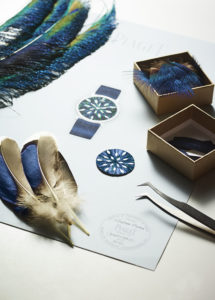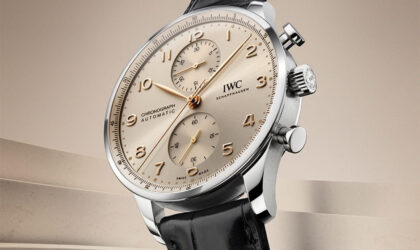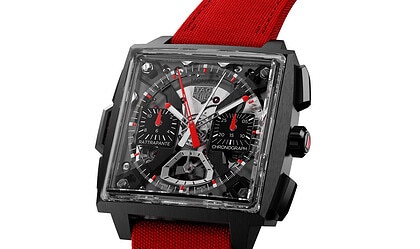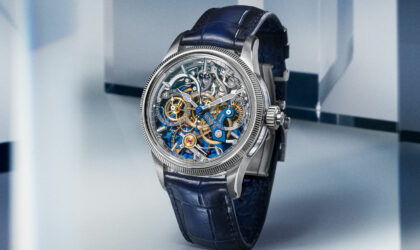If ever there was an advertisement in fashion or design calling for an artist specialising in featherwork, the requirements for the successful candidate would have to include patience and, of course, a resistance to allergies that might bring on a fit of sneezing. Fortunately these are not challenges faced by award-winning artisan Emilie Moutard-Martin, the talent behind Piaget’s Altiplano feather marquetry.
Rather, her biggest personal challenge is ‘to give back to nature what nature gives to us, because the feathers are so unbelievable’. In the watch environment, the technical hurdle is miniaturisation – having to respect the tight tolerances presented by the height of the case, patterning and gluing the feathers in this instance in less than 30mm. ‘They have to lie as flat as possible to allow the hands to work on top of them – they can’t hit a feather when they turn!’ she explains.
 Decorated in feather marquetry
Decorated in feather marquetry
Moutard-Martin first met the team from Piaget when they visited her exhibition at the Grand Palais in Paris in 2015. Her creations inspired thoughts around how they could transpose her art into a dial. The result? Their collaboration shortly thereafter on the ultra-thin Altiplano (G0A40595), with a dial decorated in feather marquetry for the collection Secrets & Lights – a Mythical Journey by Piaget. Her second commission is among this year’s Piaget releases – the Altiplano Feather Marquetry 38mm (G0A42060). A boutique-exclusive model limited to 38 pieces, it reflects the artist’s touch in the peacock, duck and rooster feather marquetry, partially covered with silver leaf on the dial, as well as the peacock feathers that adorn the satin-look navy-blue calfskin strap.
Offset by an 18ct white-gold case set with 78 brilliant-cut diamonds that houses the Manufacture Piaget 430P mechanical hand-wound movement, just 2,1mm thick, the design explores the Maison’s new radiance territory for the Métiers d’Arts category that has been dedicated to the expression of the Piaget rose for the past few years. The direction is ideally suited to Moutard-Martin’s knack for incorporating light and movement into her work and her desire to conceptualise the presentation of the material so that people will see it differently.
Focus for accuracy
The initial theme was developed in-house, and sketches painstakingly worked and reworked by studio designers for Moutard-Martin to assess their feasibility until the achievement of the final drawing. That done, she can complete the decoration of one dial in a week. She works in her atelier – a tranquil, usually silent environment that allows her to be ‘really focused’ on the task at hand. As a painter would select her pigments and materials, Moutard-Martin chooses each feather for its exact shade, density and texture, before washing it in soapy water, stabilising it in steam and meticulously recutting it by hand. Each feather is then smoothed in preparation for careful placement in its appointed place and being glued flat. How accurate is she? Very. There is very little waste.
Moutard-Martin’s prowess among close to a dozen French feather artists to date only revealed itself about eight years ago when her Master’s dissertation on artisans’ social identity revealed a ‘passion for the physicality of handcrafted creations, and by extension, a fascination for fashion and watchmaking’.
Thus abandoning her psychology studies, Moutard-Martin went on to develop her crush on feathers while training as a milliner, finding them to be ‘a captivating organic material opening up infinite creative possibilities’. ‘What I love about fashion are the lines of a silhouette, a timeless look, the intimate relationship experienced with a garment worn directly on the skin, the idea of adorning while revealing, materials that stir the senses.’
While there is one school in Paris that trains this technique, Moutard-Martin was able to learn from a professional. ‘In France, there is true recognition of those rare crafts. Their transmission to younger generations is encouraged, to keep the savoir-faire. This was my destiny,’ she says. ‘I was made for this.’
Original article by Debbie Hathway, shortened for online publication.





